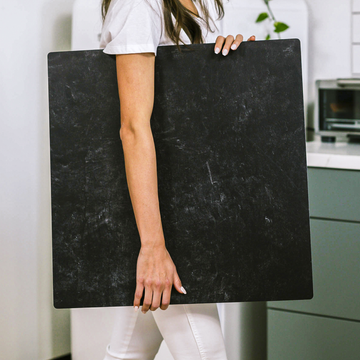Ever looked at those sleek, expensive photography surfaces and thought, "I could make that myself?" You're absolutely right-and with the right techniques, your DIY backdrops can rival professional gear. Let's ditch the basic foam board and dive into how to create surfaces that truly elevate your product and food photography.
Why Most DIY Backdrops Fall Short
The internet is full of well-meaning tutorials suggesting simple solutions like painted plywood or foam core. While these work in a pinch, they often result in flat, lifeless images. The secret to pro-level surfaces lies in three key factors:
- Texture: Realistic finishes that catch light beautifully
- Light control: Surfaces that diffuse or reflect light intentionally
- Durability: Materials that withstand repeated use without fading
Material Magic: Building Better Surfaces
For Ultra-Realistic Textures
Skip the craft paint-these advanced techniques deliver stunning results:
- Concrete look: Mix hypertufa (peat moss + cement + perlite) for a lightweight, moldable surface
- Marble effect: Layer tinted epoxy resin over MDF, then sand to your preferred sheen
- Wood grain: Use reclaimed pallet wood with a Danish oil finish for depth
Pro Tip for Perfect Finishes
Always sand in stages (80 → 220 → 400 grit) and seal with matte polyurethane. This eliminates glare while protecting your surface from stains and scratches.
Lighting Science Made Simple
Your backdrop isn't just decoration-it's an active participant in your lighting setup. Here's how different surfaces behave:
- Matte finishes: Create soft, even light-perfect for delicate products
- Glossy surfaces: Require precise light placement to avoid hotspots
- Textured materials: Add dimension by creating subtle shadow play
Build a Modular System Like a Pro
Why settle for one backdrop when you can have a whole system? Here's how to create interchangeable panels:
- Start with ¼" birch plywood base panels
- Add attachment options: neodymium magnets or French cleats
- Create multiple overlays: fabric, vinyl, or even 3D-printed textures
The best part? This entire system costs less than a single high-end commercial backdrop, yet offers endless creative possibilities.
DIY vs. Commercial: Which Should You Choose?
Go DIY if you:
- Enjoy hands-on projects
- Need custom textures
- Want to deeply understand light behavior
Buy commercial if you:
- Prioritize convenience
- Need guaranteed consistency
- Don't have time for experimentation
Remember-there's no rule saying you can't mix both approaches in your studio.
Your Turn to Create
Now that you know what's possible, which surface will you build first? Share your creations and tips with fellow photographers-together, we can push DIY photography surfaces to new heights.
Grab your materials, set up your workspace, and start crafting. Your perfect backdrop is waiting to be made.



